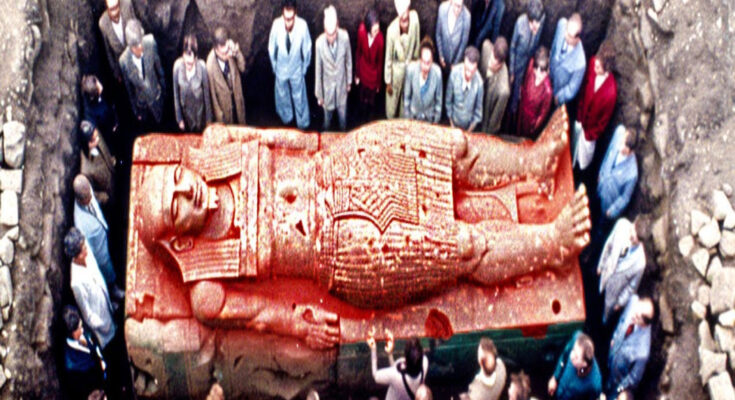The recent discovery of the Tomb of the Giant Gilgamesh has sent shockwaves through the archaeological world and captured global attention. Believed to be located in the ancient city of Uruk in present-day Iraq, this monumental find promises to rewrite the history books.
Gilgamesh, a legendary figure from Mesopotamian mythology, was thought to be a semi-divine king of Uruk around 2700 BCE. His exploits and adventures were immortalized in the Epic of Gilgamesh, one of the oldest known works of literature. The discovery of his tomb could provide unprecedented insights into both the historical basis for these tales and the early civilizations of Mesopotamia.
Initial excavations reportedly uncovered a massive structure with inscriptions and artifacts pointing to its royal and ceremonial significance. Scholars are eager to explore further, hoping to unlock the secrets held within this ancient site.
The implications of such a discovery are profound, not only for understanding Gilgamesh himself but also for shedding light on the broader cultural, political, and religious contexts of ancient Mesopotamia. As archaeologists continue their work, the Tomb of the Giant Gilgamesh stands as a testament to the enduring mysteries and rich history of humanity’s earliest civilizations.
The recent discovery of the Tomb of the Giant Gilgamesh in the ancient city of Uruk, located in present-day Iraq, has reverberated throughout the archaeological community and captured global attention. Gilgamesh, a legendary figure from Mesopotamian mythology, was believed to have ruled Uruk around 2700 BCE. His epic adventures were documented in the Epic of Gilgamesh, which is one of the oldest known works of literature.
The significance of this discovery cannot be overstated. The tomb has the potential to rewrite our understanding of ancient Mesopotamian history, providing unprecedented insights into both the historical basis for the epic tales and the early civilizations of the region. Initial excavations have revealed a massive structure filled with inscriptions and artifacts that point to its royal and ceremonial importance.
Scholars and archaeologists are eagerly continuing their work at the site, hoping to uncover more secrets and piece together the puzzle of Gilgamesh’s life and times. Beyond the figure of Gilgamesh himself, this discovery holds profound implications for our understanding of the cultural, political, and religious contexts of ancient Mesopotamia. It serves as a powerful reminder of the enduring mysteries and rich history of humanity’s earliest civilizations, offering a glimpse into a world that laid the foundation for many aspects of modern society.



